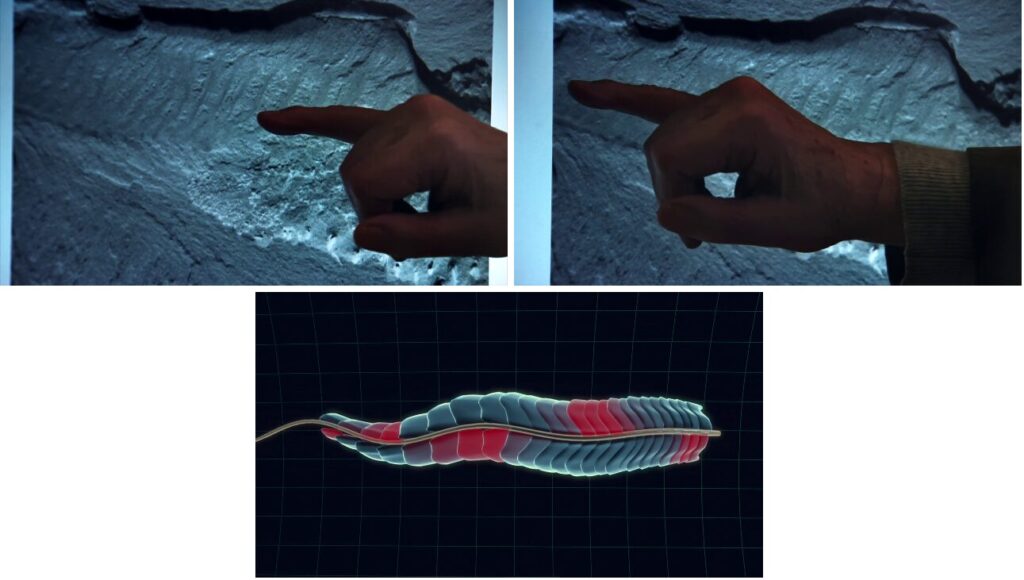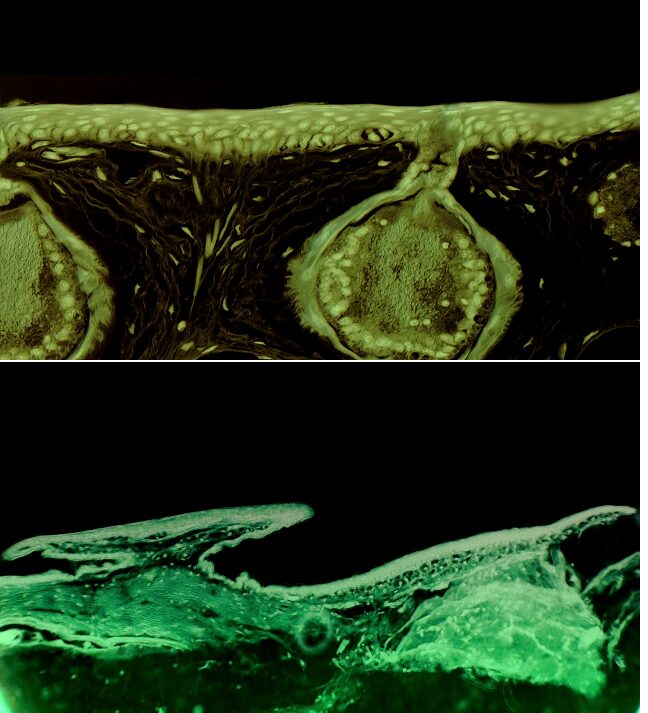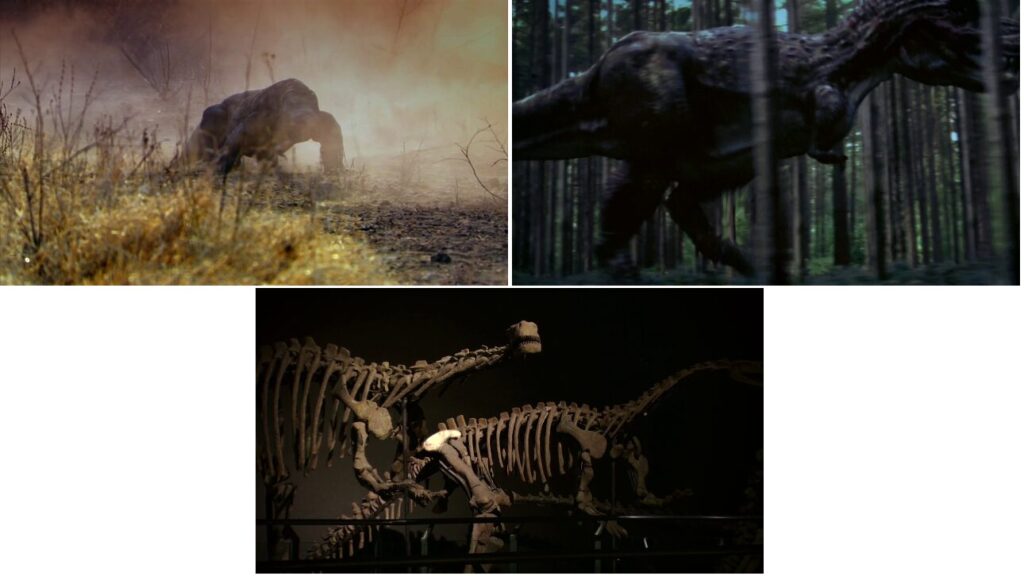Original air date: 20 September 2013

The outline shows how the programme unfolds
Selected sequences
Fossilised remains of the notochord
It should be emphasised that the notochord is the forerunner of the backbone. Vertebrates start their development forming a notochord that develops into the backbone. Some animals only have the notochord all their lives, they are not true vertebrates.

The top two frames show Attenborough pointing out where the notochord was. This was the forerunner of the current backbone, as mentioned earlier. The bottom frame shows how the rod was used to help the animal move about in a completely new way (7’47-8’15).
Amphibians evolving into reptiles

Comparison of amphibian skin (above) which is full of living cells while reptilian one (below) is filled with keratin, same material as in our fingernails (40’05 & 40’11). It seals water inside the body and makes reptilians more resistant to extra dry conditions.
Hip relocation, underneath instead of sideways

Next step in reptile evolution involved the hip bone moving from sideways of the body to underneath it so it could support much larger weight (43’30-45’30)
Fur and colour of dinosaurs

The fossils of some dinosaurs contain filaments that look like fur, that can keep you warm (left). Removing a tiny piece to put under a microscope (right) reveals something the scientists concluded as being melanosomes, they contained pigment!

The image on the left shows the filaments from earlier snapshot now forming feathers that on the right have formed wings for the dinosaur Anchiornis. The concluding result regarding this creature being able to fly or not, well it could probably glide.